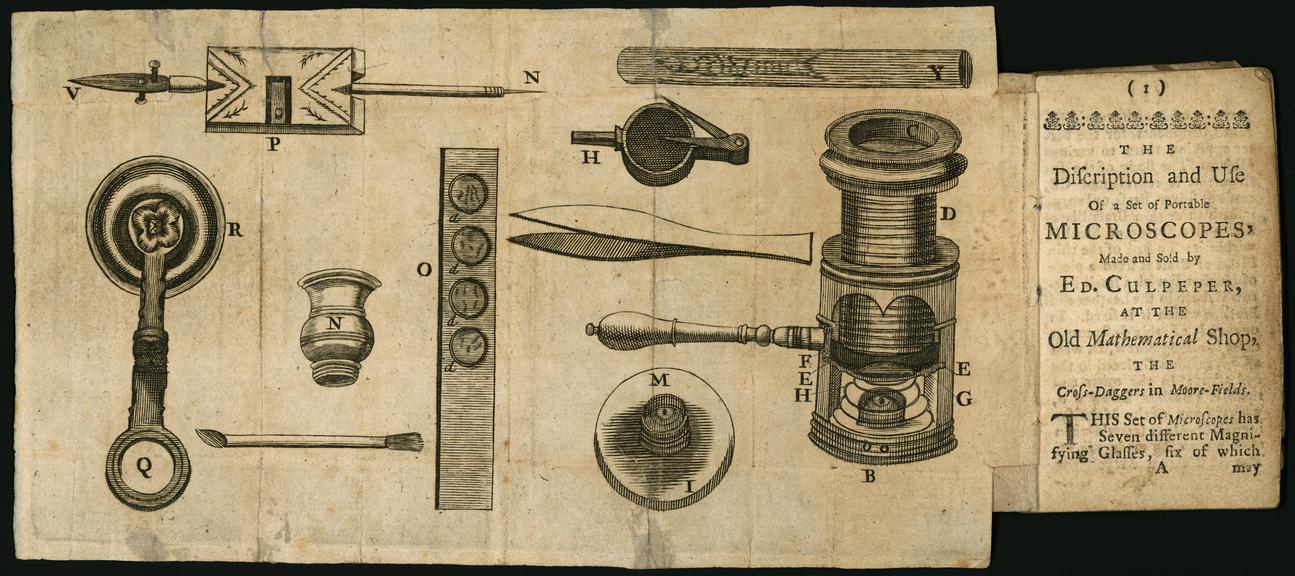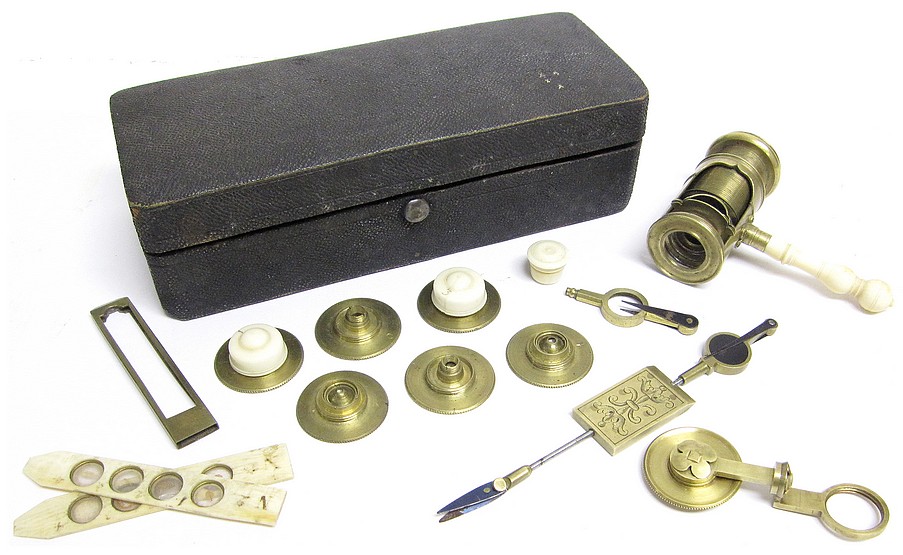
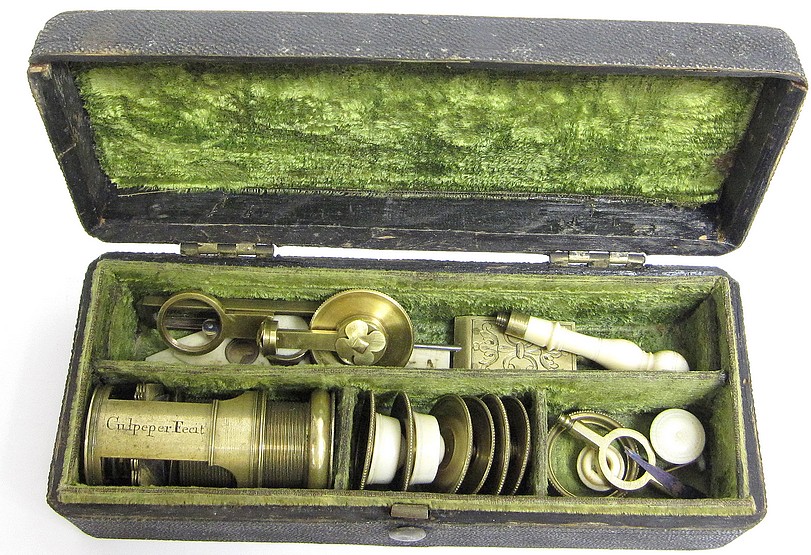
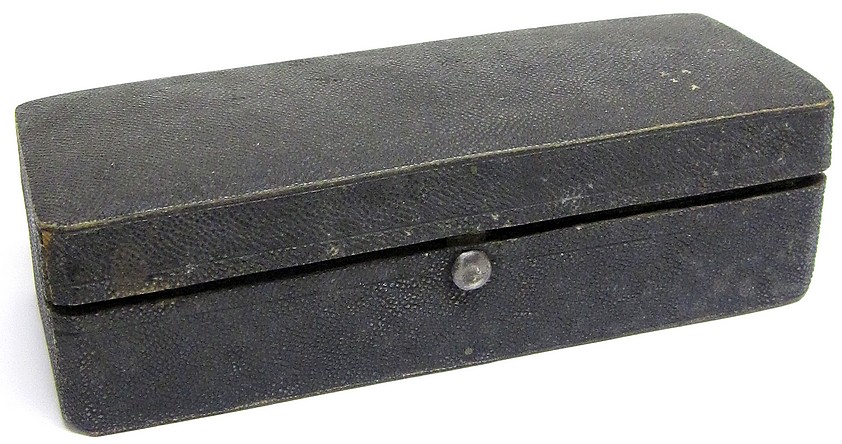
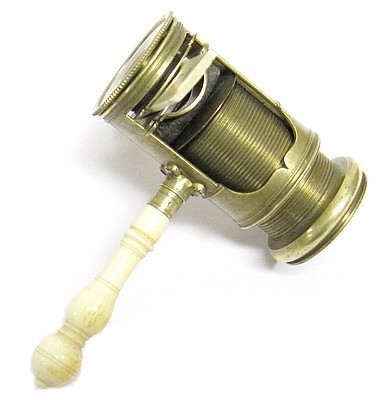
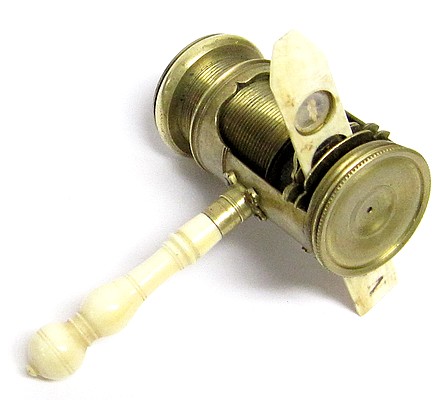
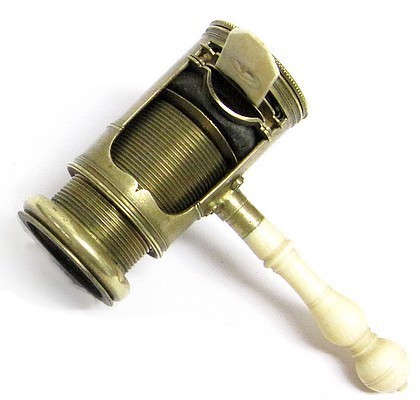
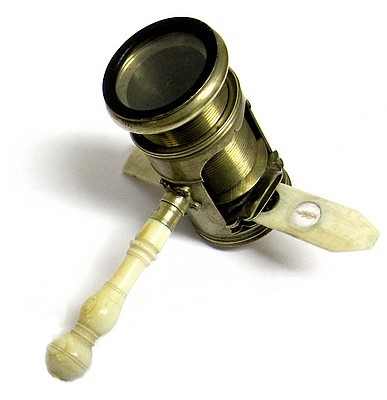
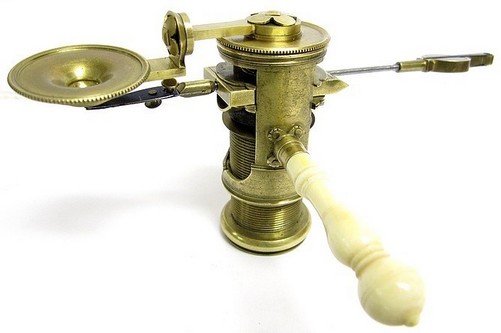
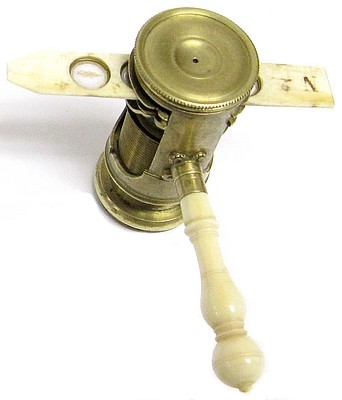
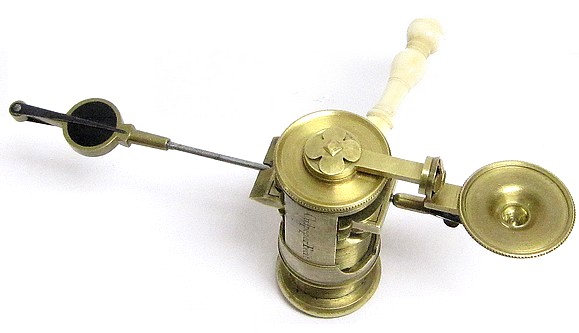
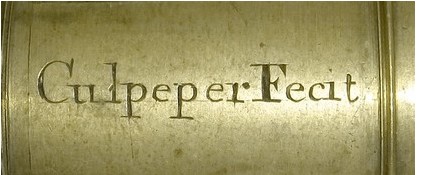

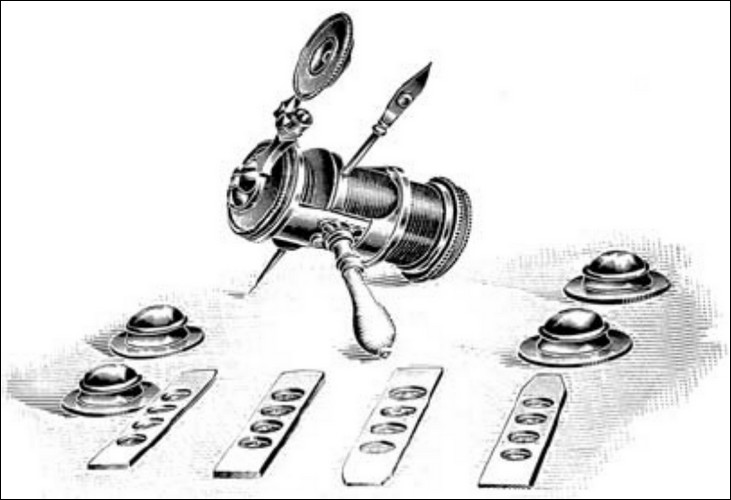
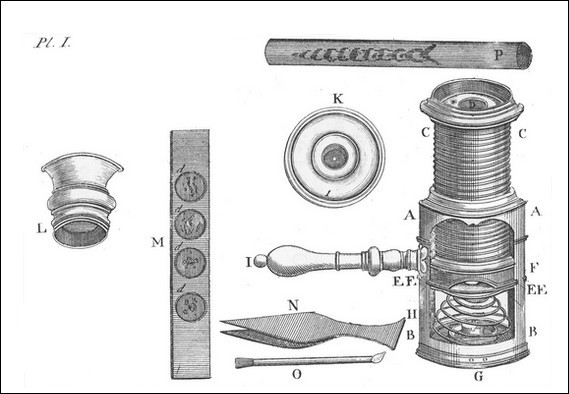
James Wilson
(fl.1702-1710) published a description of his
screw barrel microscope in the Royal Society's
journal Philosophical Transactions in 1702.
An improved form was subsequently illustrated and
described in the various editions of Henry Baker's
book, The Microscope made
Easy, in the chapter entitled Of Mr. Wilson's Single
Pocket-Microscope.
The microscope in this
collection is engraved on the body Culpeper
Fecit. Edmund Culpeper (1670-1737) is
perhaps best known and justly famous for the compound
microscope that he designed early in the 18th
century. This type of microscope became extremely
popular and was produced by many other opticians
throughout the century and well into the next. Any
microscope of this type is now often referred to
simply as a "Culpeper microscope".
It is less well known
that during his tenure he was equally famous for his
simple microscopes based on the Wilson screw barrel
design. He produced an improved form of these
microscopes constructed both in brass or in ivory.
See the article Edmund Culpeper and the
Screwbarrel Microscope published in the
Bulletin of the Scientific Instrument Society No.
88, 2006.
The microscope shown
here comes equipped with six numbered objectives, two
of which still retain their protective ivory caps.
Also included are two ivory sliders, a partial wet
slide, an ivory talc box containing mica discs and
for observations of opaque objects, a specimen
(stage) forceps or an ivory disk with light and dark
colored sides that mount on the microscope using a
decoratively engraved rectangular forceps plate (a
Culpeper innovation). Also included is the extension
needed to mount the objectives when using the stage
forceps. All are housed in a black fish-skin covered
wood box with a plush green lining. A similar
instrument is located in the Science Museum London,
inventory No.A234094.
Culpeper Trade Card ( Science Museum Collection)
